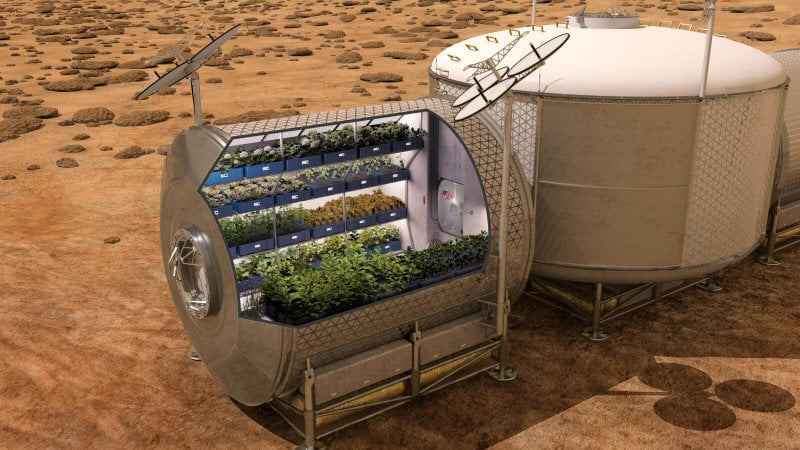It takes 25,000 pounds of food to feed 4 astronauts on a 3 year mission to Mars. Here’s how ‘space farming’ might help feed them.
It takes 25,000 pounds of food to feed 4 astronauts on a 3 year mission to Mars. Here’s how ‘space farming’ might help feed them.


The biggest challenges is finding a way to feed crew members for the weeks, months and even years they spend in space.
Rajkumar Hassamani, of the Institute of Agricultural Biotechnology at the University of Agricultural Sciences in India, told Al Jazeera Net in an emailed statement that according to NASA, “it costs between 20 and 20 to send a kilogram of packaged food to the International Space Station. 40 thousand dollars.”
…
Hosamani added, “According to an estimate, a crew of 4 would need 10 to 12 thousand kg of food for a 3-year journey, which is logistically impossible and not economically viable. Therefore, food production inside a ship “is necessary for long-duration space exploration missions in space or on the surface of a planet.”
…
Hossamani focuses on translating the results of space agriculture research into direct applications in terrestrial agriculture, and limits them to the following points:
- Space agriculture research can help develop technologies that benefit the concept of a circular agricultural economy, as resource waste can be minimal or zero, and this has direct implications for conservation agriculture on Earth.
- Space breeding is another application that comes directly from space agriculture research, and China has a dedicated space breeding program to help develop better varieties with higher yields, disease resistance, etc.
- Breeding speed is another byproduct that helps plant breeders develop better varieties faster, reducing the time needed to breed new varieties.
This is an excerpt. Read the original post here

 | Videos | More... |

Video: Nuclear energy will destroy us? Global warming is an existential threat? Chemicals are massacring bees? Donate to the Green Industrial Complex!
 | Bees & Pollinators | More... |

GLP podcast: Science journalism is a mess. Here’s how to fix it

Mosquito massacre: Can we safely tackle malaria with a CRISPR gene drive?

Are we facing an ‘Insect Apocalypse’ caused by ‘intensive, industrial’ farming and agricultural chemicals? The media say yes; Science says ‘no’
 | Infographics | More... |

Infographic: Global regulatory and health research agencies on whether glyphosate causes cancer
 | GMO FAQs | More... |

Why is there controversy over GMO foods but not GMO drugs?

How are GMOs labeled around the world?

How does genetic engineering differ from conventional breeding?
 | GLP Profiles | More... |

Alex Jones: Right-wing conspiracy theorist stokes fear of GMOs, pesticides to sell ‘health supplements’




 Viewpoint — Fact checking MAHA mythmakers: How wellness influencers and RFK, Jr. undermine American science and health
Viewpoint — Fact checking MAHA mythmakers: How wellness influencers and RFK, Jr. undermine American science and health Viewpoint: Video — Big Solar is gobbling up productive agricultural land and hurting farmers yet providing little energy or sustainabilty gains
Viewpoint: Video — Big Solar is gobbling up productive agricultural land and hurting farmers yet providing little energy or sustainabilty gains Fighting deforestation with CO2: Biotechnology breakthrough creates sustainable palm oil alternative for cosmetics
Fighting deforestation with CO2: Biotechnology breakthrough creates sustainable palm oil alternative for cosmetics Trust issues: What happens when therapists use ChatGPT?
Trust issues: What happens when therapists use ChatGPT? 30-year-old tomato line shows genetic resistance to devastating virus
30-year-old tomato line shows genetic resistance to devastating virus California, Washington, Oregon forge immunization alliance to safeguard vaccine access against federal undermining
California, Washington, Oregon forge immunization alliance to safeguard vaccine access against federal undermining The free-range chicken dilemma: Better for birds, but with substantial costs
The free-range chicken dilemma: Better for birds, but with substantial costs ‘You have to treat the brain first’: Rethinking chronic pain with Sanjay Gupta
‘You have to treat the brain first’: Rethinking chronic pain with Sanjay Gupta
